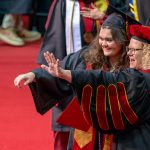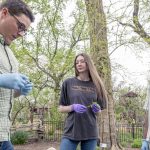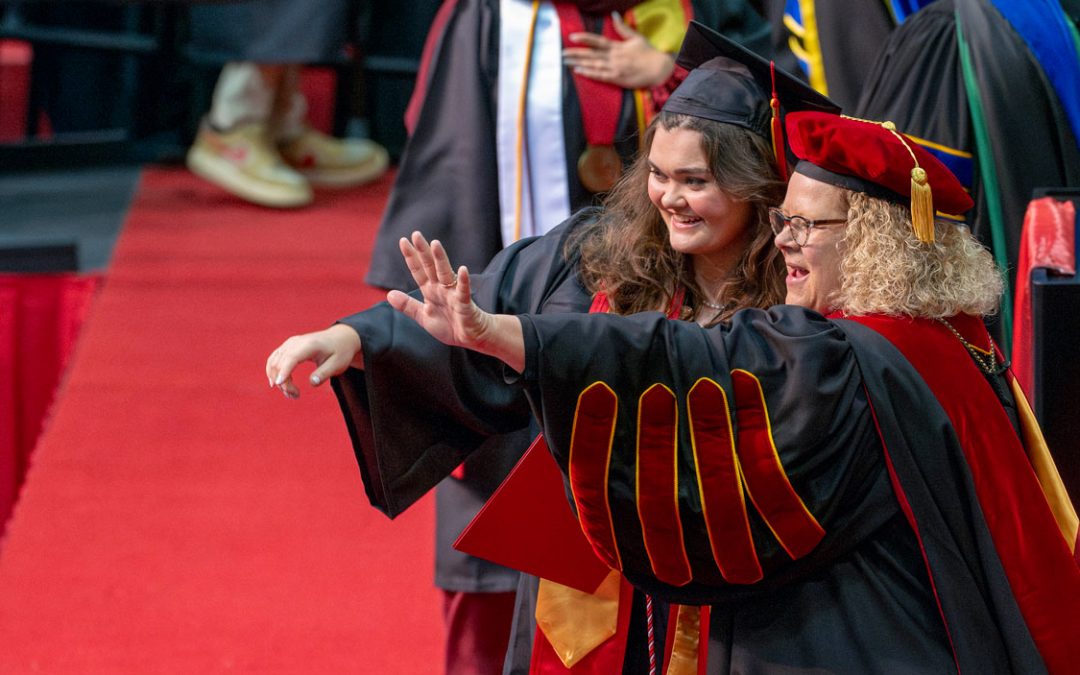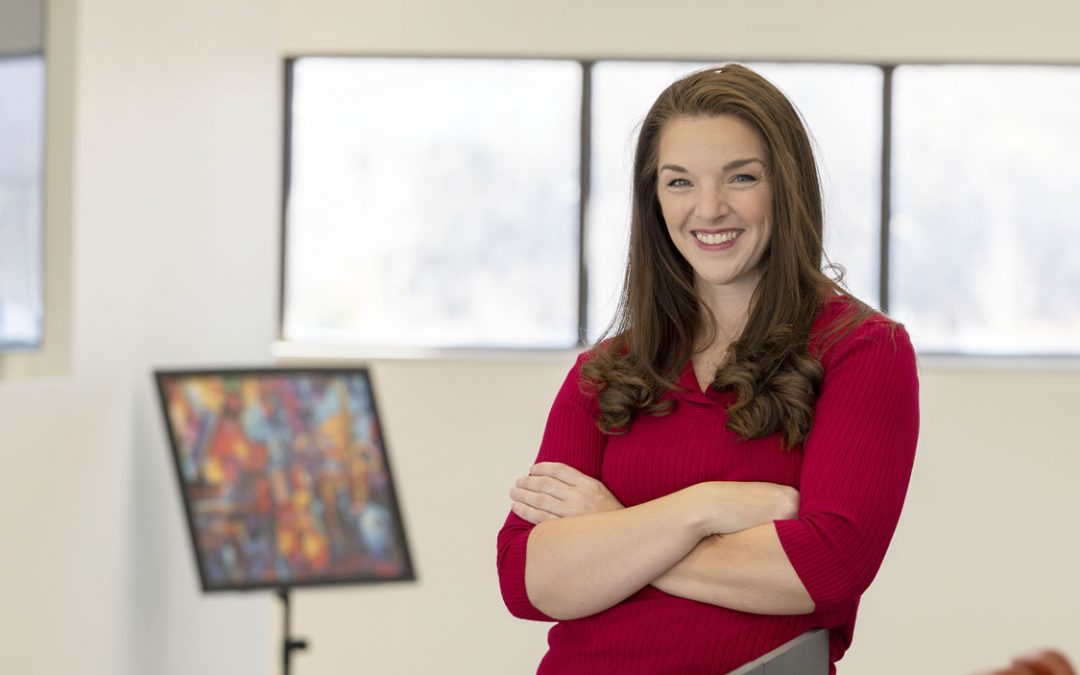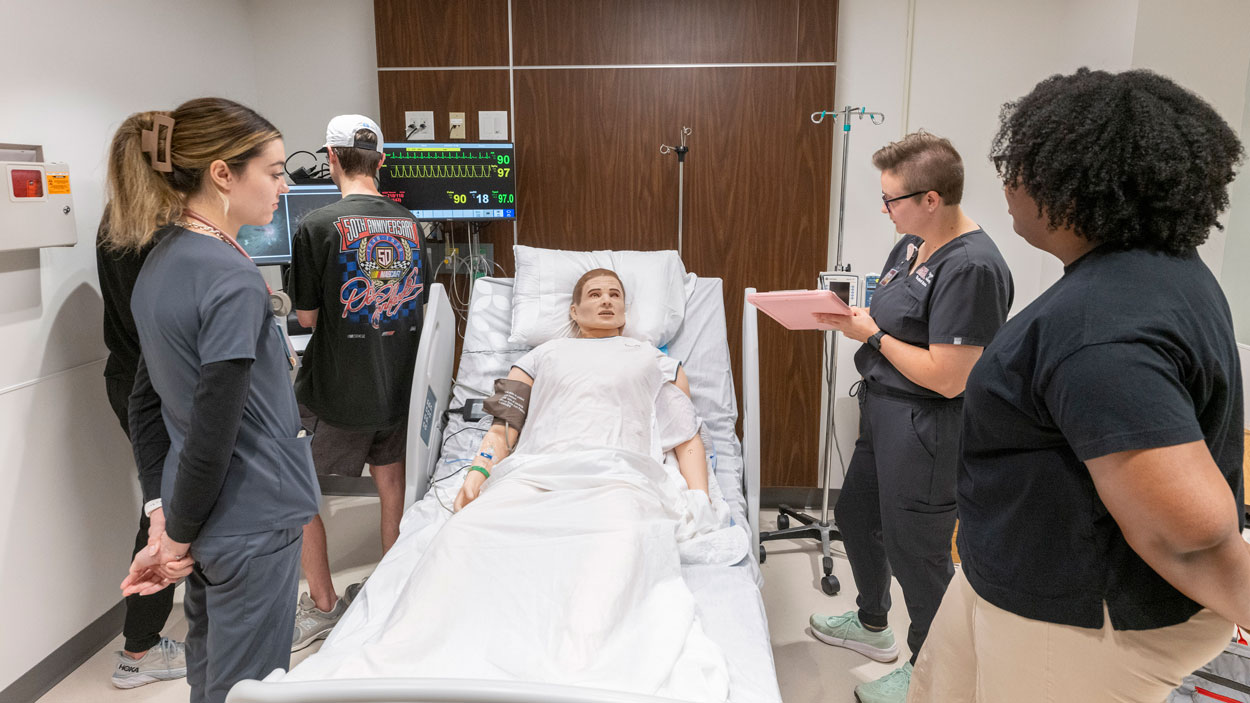
UMSL third-year optometry students Hannah Rinehart and Josh Smittle (at left looking at screen), nursing students McKenna Tutor and Kylie Fenemor and University of Health Sciences & Pharmacy Pharmacy student Cierra West work through a hypertension simulation in the Nursing Simulation Lab in Seton Center Hall on June 9. (Photo by Derik Holtmann)
How does high blood pressure affect your vision?
A patient with dangerously elevated hypertension who was at risk for stroke or other end-organ damage put forth that question to a group of students from the University of Missouri–St. Louis on Monday after learning about ways to manage his hypertensive retinopathy. Paige Raes, a third-year student in the UMSL College of Optometry, carefully explained how high blood pressure can damage the blood vessels in the retina and cause vision loss.
All in all, it was a pretty standard patient-provider interaction – except for the fact that the patient was actually a high-fidelity mannequin controlled by an instructor in another room.
During the unique interprofessional event in UMSL’s state-of-the-art Nursing Simulation Lab, a group of students – including 42 third-year students in the College of Optometry, about a dozen students in the Accelerated BSN Program in the College of Nursing and a few students from the University of Health Sciences & Pharmacy (formerly St. Louis College of Pharmacy) – worked together to evaluate patients with hypertension, or high blood pressure, and come up with a care plan.
Dr. Casey Peterson, an associate clinical professor and coordinator of interprofessional education in the College of Optometry, said faculty members decided to focus on hypertension specifically as it’s a common issue facing many of the patients who are evaluated by optometry students.
“It’s something that’s so common for us to see,” Peterson said. “Our students take blood pressure as part of every comprehensive eye exam, and so often we see high blood pressure – at least once every couple of weeks. But students don’t get to see the next steps, so we wanted to help them understand what goes into the care plan after these patients come in for new glasses but we end up uncovering serious systemic concerns.”
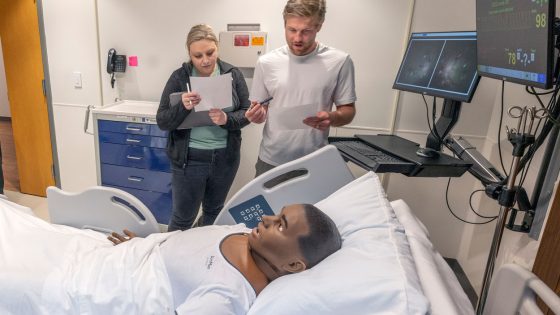
Paige Raes and Cole Priggel, both students in their third year of the College of Optometry, work through a hypertension simulation. (Photo by Derik Holtmann)
Although the College of Optometry has hosted other simulation events for students in the past, this was the first time students were able to practice their learning with the Nursing Simulation Lab’s life-like, high-fidelity mannequins, which can simulate blinking, breathing and speaking and are controlled by instructors from another room down the hall.
The third-year optometry students recently started seeing patients after receiving their white coats in May, and working in the simulation lab offered them a unique opportunity to interact with patients in a controlled environment. One such optometry student, Josh Smittle, said working in a team alongside the other students made the experience less nerve-wracking.
Gathered together in a debriefing room after the simulation, the group of students discussed the importance of effective communication and collaboration across different disciplines and how interdisciplinary collaboration can provide a fuller picture of each patient’s situation.
“While we were assessing separately, we came together as a team,” said nursing student Kylie Fenemor.


